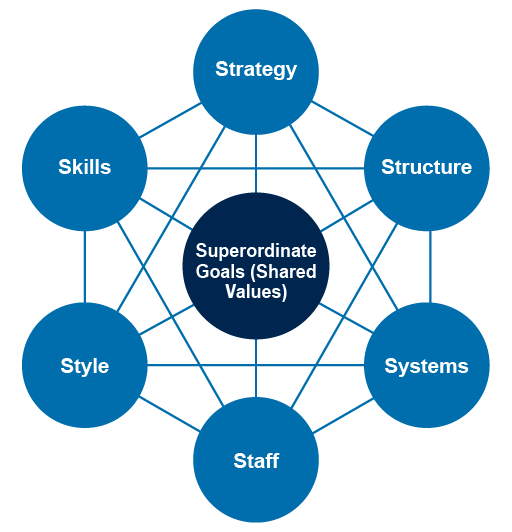9.2 The 7S model
The Seven S framework first appeared in The art of Japanese management by Richard Pascale and Anthony Athos in 1981. They had been looking at how Japanese industry had been so successful at around the same time Tom Peters and Robert Waterman were exploring what made a company excellent. The Seven S model was born at a meeting of the four authors in 1978. It went on to appear in In search of excellence by Waternans and Peters and was taken up as a basic tool by the global management consultancy McKinsey: it's sometimes known as the McKinsey 7S model.
The model comprises the following. You can see how they relate to each other in Figure 15.
- Shared values – What does the organisation believe in?
- Strategy – What does the organisation intend to do?
- Structure – What is the structure of the organisation?
- Systems – What procedures, processes and routines are important?
- Style – How do people behave? What is the culture?
- Staff – Who works in the organisation, and what do they do?
- Skills – What are the core competencies of the organisation and the staff?
The main benefit to using the 7S model is its ability to ‘diagnose’ the status quo and its influential elements. It provides the user with a complete view of the organisation.
It is important to remember that each element is interdependent, so if one is changed, there will be an impact on other elements.
In an environment of ‘constant change’, you should focus on the flexibility of the model and not allow it to become too rigid.

